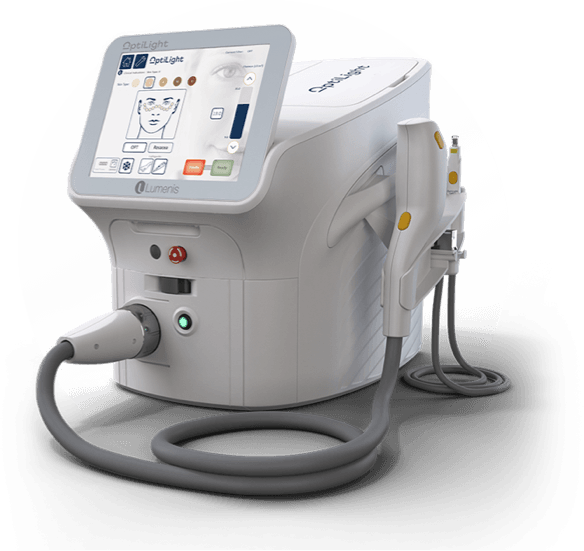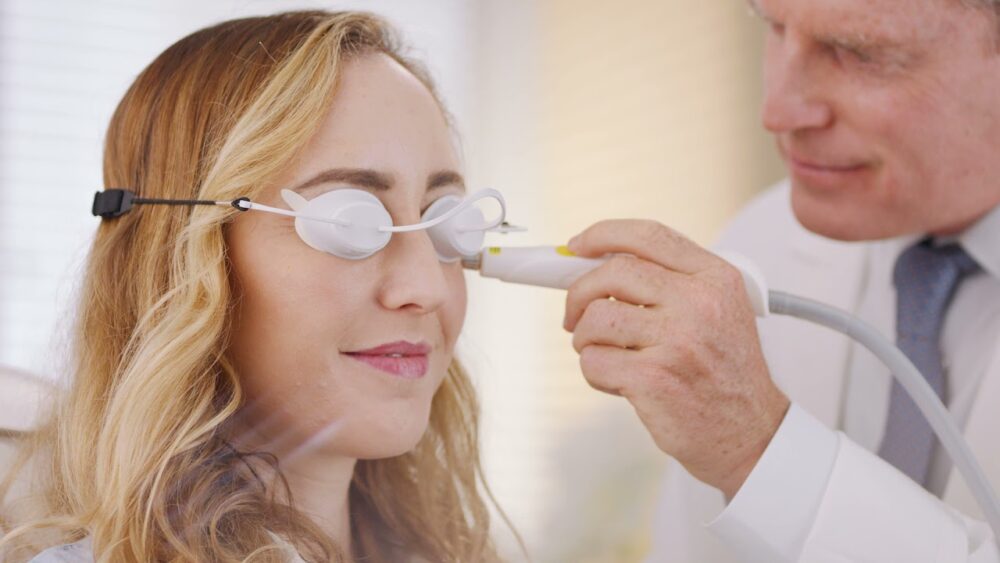Treating dry eyes is made easy with the latest technology from Lumenis.
More than 4 million people suffer from dry eye disease (DED) in Australia, but only 26 per cent have sought treatment. For many of them, sore, red and puffy eyes are a daily occurrence without even noticing their symptoms are those of a chronic, progressive condition.

But now there is a new treatment that can minimise the effects of dry eye after just four 15-minute sessions. OptiLight by Lumenis is the first and only FDA approved and TGA listed IPL technology with patented Optimal Pulse Technology (OPT®) to treat DED.
The treatment uses Intense Pulsed Light to break the cycle of DED by alleviating abnormal blood vessels and rosacea, restoring Meibomian glands and tear osmolarity levels, improving tear break-up time, reducing inflammatory mediators and decreasing demodex mites and bacterial burden.
“In my clinic we deal with dry eye disease every day and have found that in order to make a meaningful impact on the disease, we need to address the underlying inflammation,” says Dr. Jason Holland, lead clinical optometrist at The Eye Health Centre in Brisbane.
We sat down with Dr. Holland to find out more about dry eye disease, how to treat it and the OptiLight process.
What are the common symptoms of dry eye disease?
JH: They can be extremely variable. Anything from blurred and inconsistent vision, through to an increase in glare or more commonly eyes that feel gritty, stinging, burning or tired.
Can you talk us through the OptiLight treatment process?
JH: OptiLight is a very comfortable and efficient treatment process. Firstly, the patient’s skin needs to be very clean, so all makeup and any pigmented skin products needs to be removed. Protective shields are placed over the patient’s eyes. The patient can be seated comfortably or reclined. Next a small amount of coupling gel is applied just below the eye area. The OptiLight treatment can then begin. The patient will experience multiple flashes of light and a mild sensation of heat as the practitioner utilises the small OptiLight tip to apply light energy along the lid margin and across the bridge of the nose.
How exactly does the OptiLight treat dry eye disease?
JH: OptiLight utilises many mechanisms of action to treat Dry Eye Disease. Firstly, the transient warming of the Meibum in the Meibomian glands helps facilitate expression of the glands by the practitioner following an OptiLight treatment. Secondly, the bright pulse of light reduces the pathogens in and around the Meibomian gland which can influence the quality of the Meibum. Lastly and most importantly, OptiLight provides Photothermolysis. This is the reduction in inflammatory mediators and abnormal blood vessels in the eyelid region. DED can be a chronic inflammatory condition and as such, reducing the source of inflammation can assist patients in finding long term relief.

Who can perform the treatment?
JH: The treatment can only be performed by appropriately trained Optometrists and Ophthalmologists in Australia
What remedies would you recommend to patients who suffer from dry eye disease?
JH: I always start with environmental modification. Sometimes the simple things are the best. Review your daily water intake. Assess how many cups of coffee, tea or alcoholic drinks you consume each day. These can have a dehydrating effect. Monitor your blink patterns. Are you blinking completely, do you have conscious blinks every 20 minutes when using a device or computer? Do you consume an appropriate amount of Omega-3 in your diet? It is suggested that for healthy Meibum we should consume two to three meals of deep-sea fish every week.

Lumenis ANZ are excited to announce esteemed journalist, TV presenter and radio host Melissa Doyle as the official ambassador for OptiLight in Australia and New Zealand. Doyle has been diagnosed with dry eye disease due to ocular rosacea and is thrilled with the treatment available to alleviate the pain that comes with DED.
“Because of my personal experience, it’s become very important to me that the message gets out about the prevalence of DED, what the symptoms are that are often overlooked or mistaken for less serious conditions, and what people can do to improve their eye health in day-to-day life. Nobody should have to suffer in silence when there is a powerful and safe, TGA-listed device out there that can turn your life around,” says Doyle.
DID YOU KNOW:
There are 5 ways you can catch up with SPA+CLINIC?
- Our quarterly print magazine, delivered to your door. Subscribe here.
- Our website, which is updated daily with its own completely unique content and breaking news.
- Our weekly newsletter – free to your inbox! Subscribe here.
- Our digital magazine – click here to view previous issues.
- Our social media – see daily updates on our Instagram, Facebook & Linkedin





